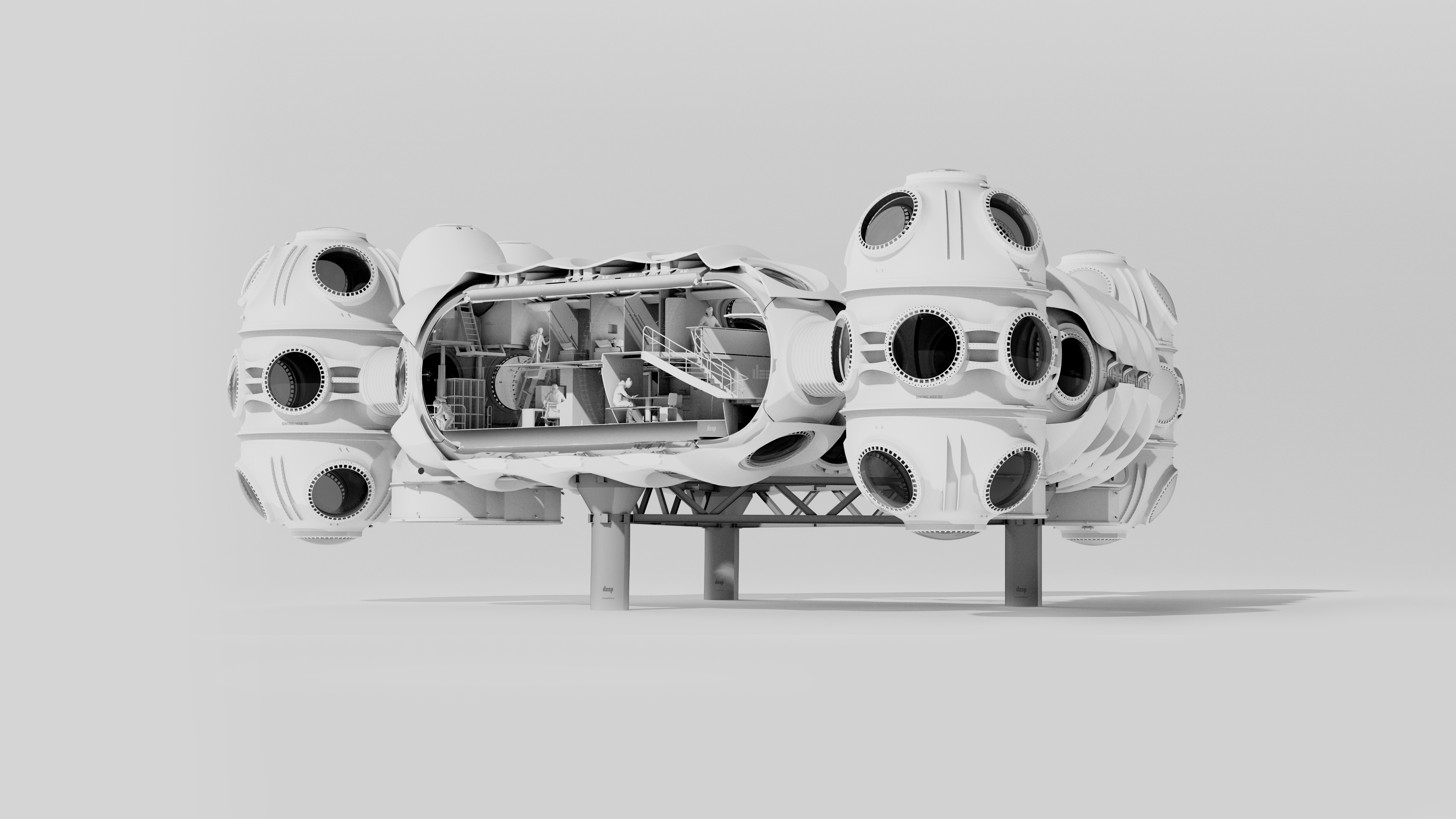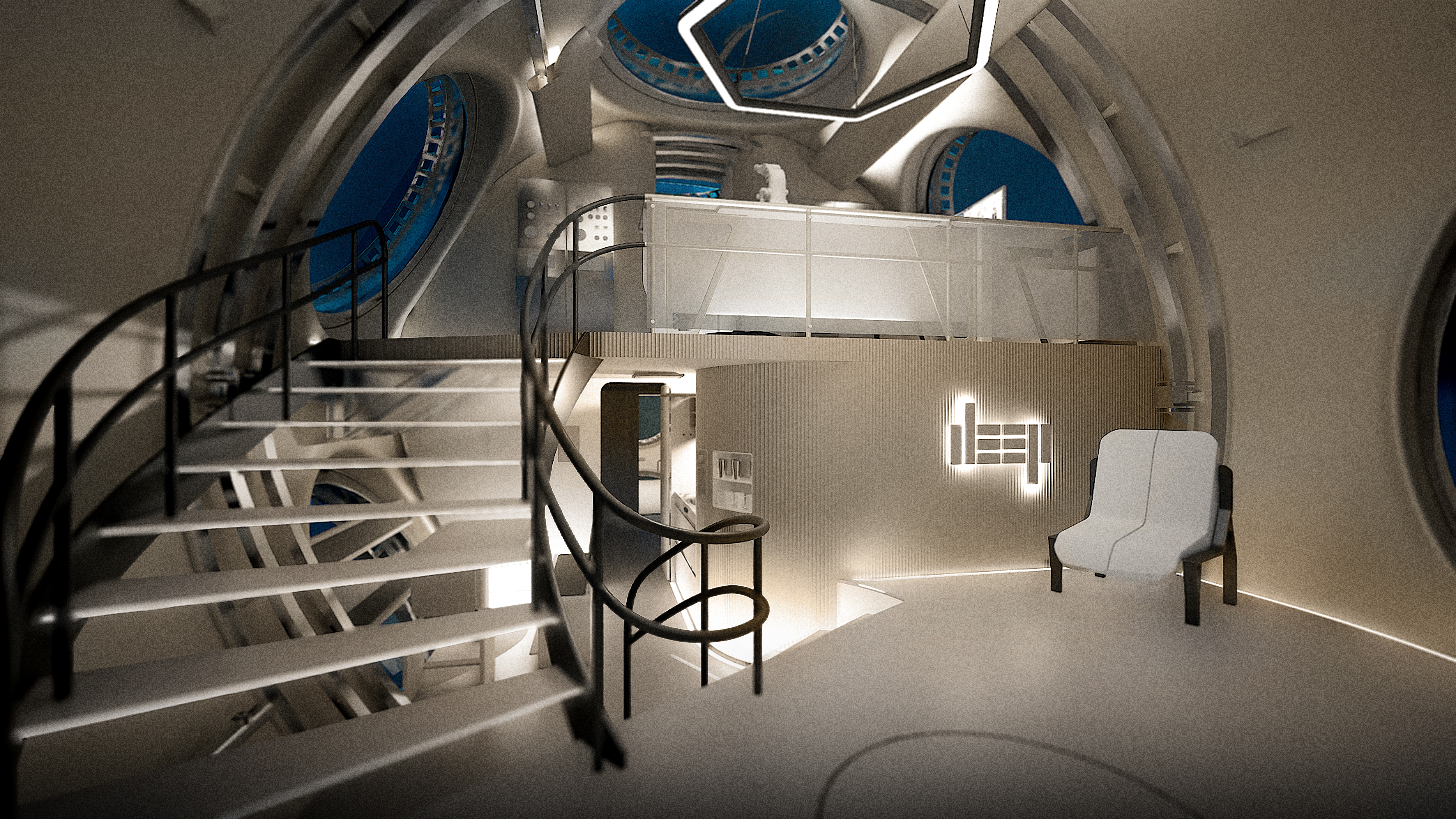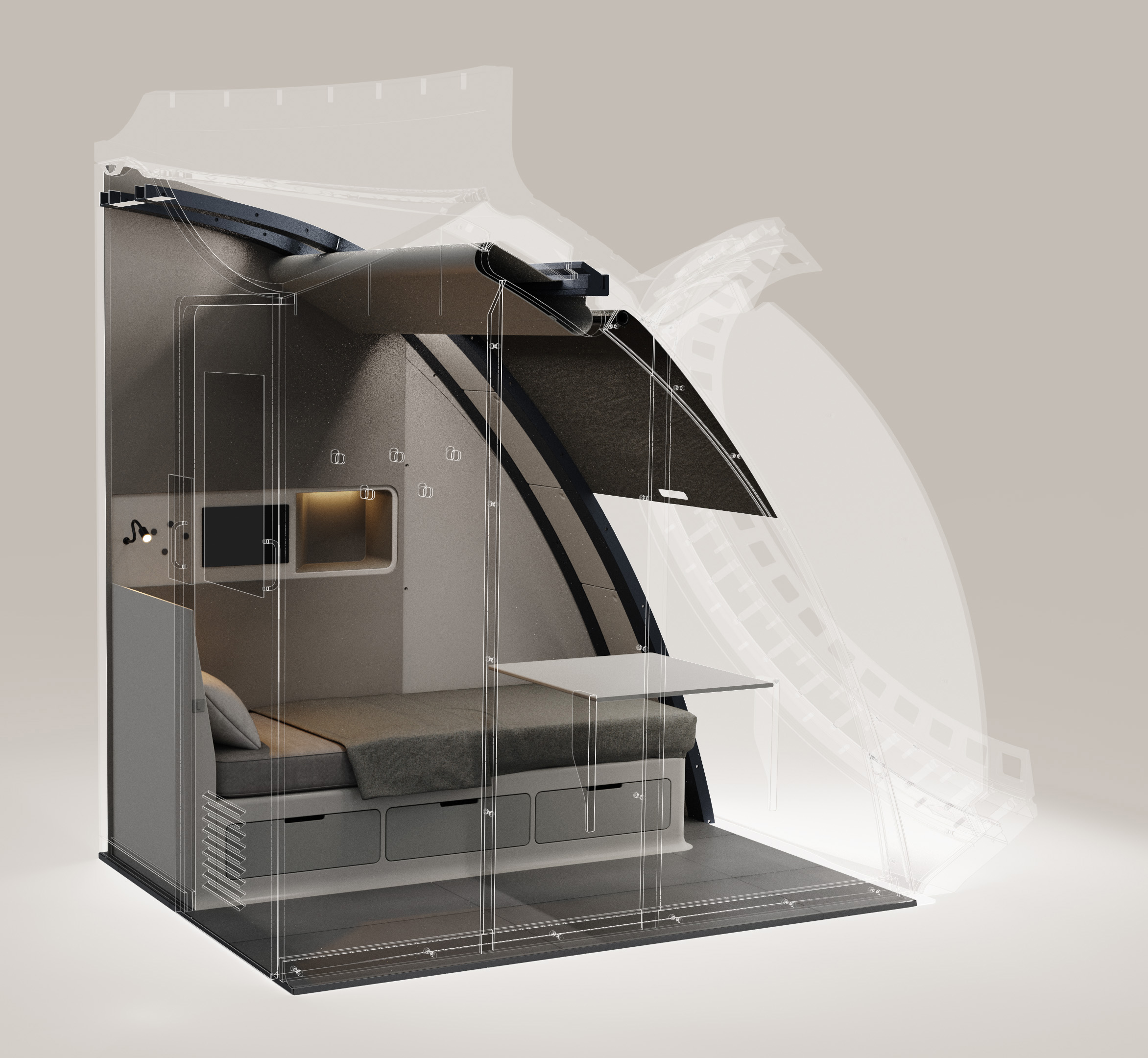DEEP, a UK-based engineering firm, has said it’s taking the first steps to making a “permanent human presence” under the oceans from 2027. As shown in their mock-up images, the company hopes to create futuristic modular habitats that will allow people to live underwater at depths of up to 200 meters (656 feet) for up to 28 days at a time.
The crux of their vision is the Sentinel underwater habitat, a customizable station that provides living spaces, communal areas, and research labs for scientists studying the underwater environment.
“We need to preserve the oceans. To do that we need to understand them. The oceans sit at the centre of many of the generational challenges the world is facing, and they also offer opportunities we have not even begun to comprehend. They are the source of at least every other breath we take. They influence the weather. They influence the climate. They influence us,” Steve Etherton, President of DEEP’s arm in Europe, the Middle East, and Africa, said in a statement.

Details of the DEEP Sentinel module.
Image credit: DEEP
“Yet, this life-sustaining ecosystem remains surprisingly unknown. Through our innovative technology DEEP will enable scientists to operate at depth for extended periods of time and we hope, in some small way, will contribute to our understanding of this life-giving environment,” he continued.
DEEP says the modules will, in theory, be fueled by “renewable power” and linked to a satellite communications buoy. They also claim they’re developing a large-scale bioreactor that will be able to treat all waste without the need to regularly empty tanks.
They’re designing the Sentinel units to have a service life of 20 years and to be able to be redeployed to different locations across the world.

An artist’s impression of the DEEP Sentinel interior.
Image credit: DEEP
When it comes to futuristic concept designs with slick PR, it’s often hard to draw a clear line between the viable plans and the somewhat loopy pipedreams. Many, at least in our experience, never get off the ground. Nevertheless, it does appear that DEEP is taking its plans seriously and already making some movement in the real world.
DEEP is set to transform a flooded quarry in the UK, formerly known as the National Diving & Activity Centre, into a 600-meter (1,968-foot) long and 80-meter (262-foot) deep water facility for training, testing, and research.

An illustration of what the bedrooms may look like.
Image credit: DEEP
“DEEP is coming out of stealth mode now as we need to take others on this journey. We are already talking to potential international partners, and others with a long-term view of the needs of the planet, who recognise that the up-side for humanity in preserving and husbanding the oceans is now too great to ignore,” added Sean Wolpert, President of the Americas at DEEP.
“Looking at the themes around the emerging new ocean/blue economy we hear of opportunity and solutions in pharmaceutical research, in carbon capture, in innovative medicines. This is about how we can cooperate and can begin to work with the oceans for generations to come,” continued Wolpert.
Source Link: Startup Wants To Make "Permanent Human Presence" Undersea This Decade